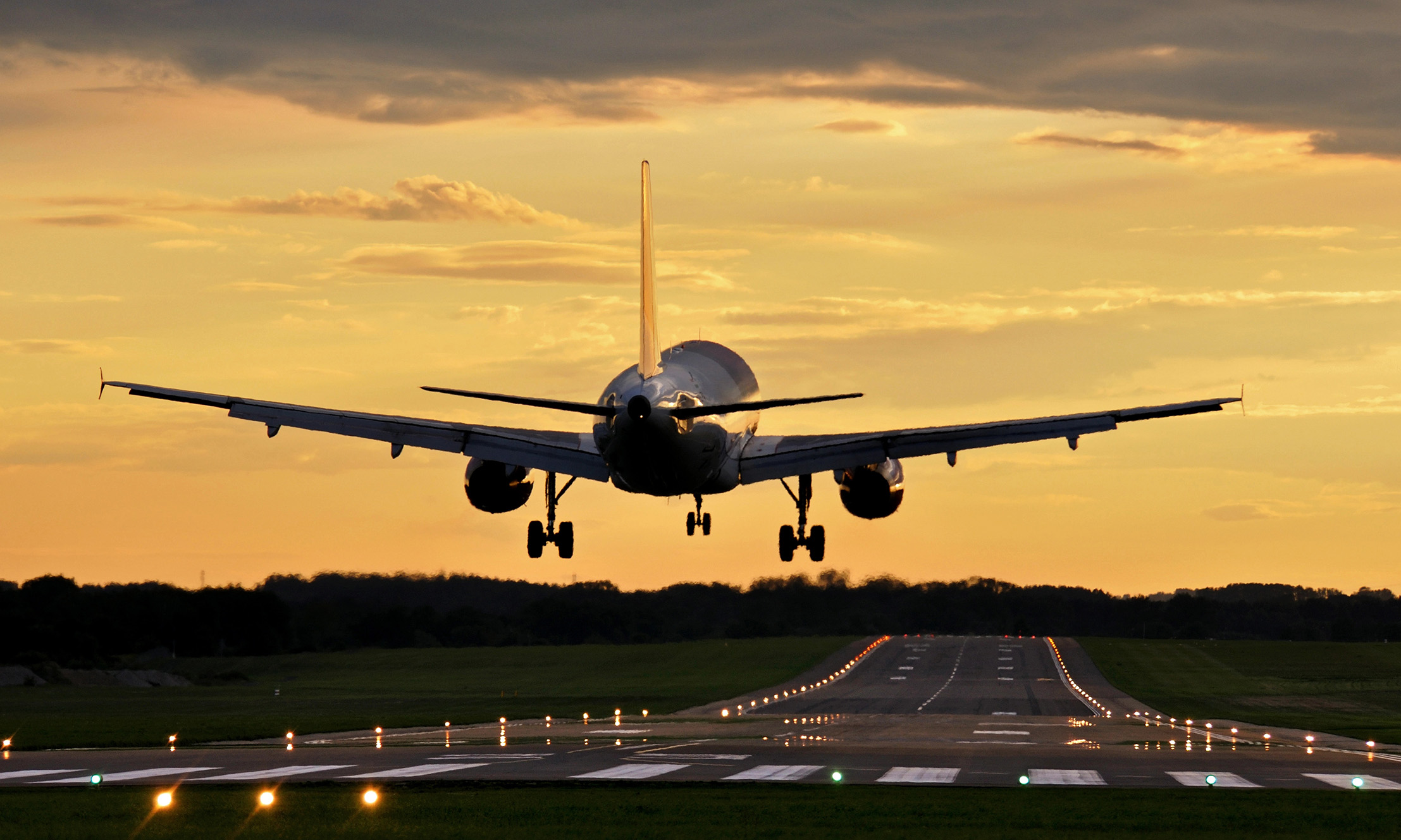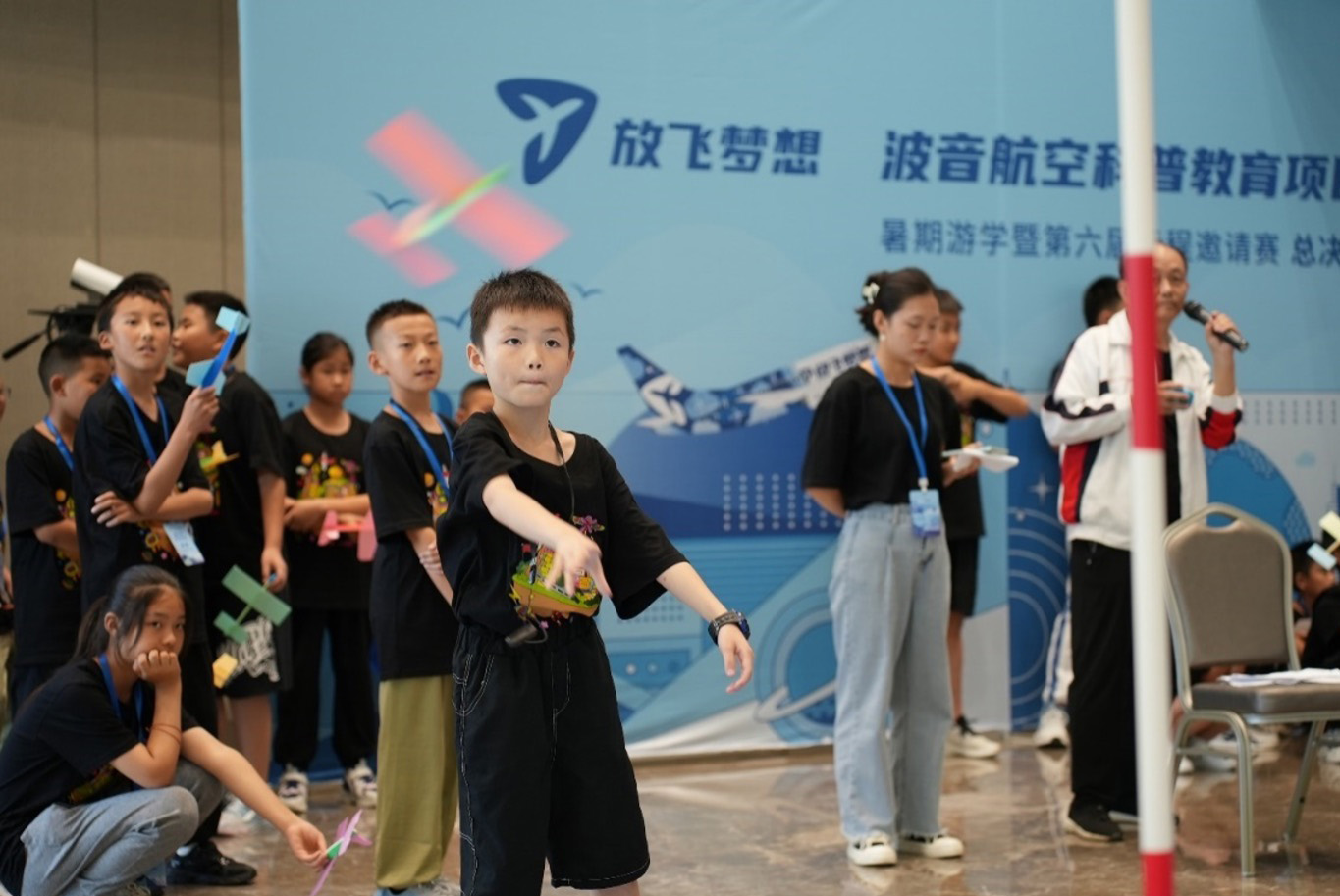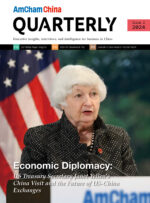Navigating Cooperation and Competition: The Essential Role of the US-China Aviation Cooperation Program
By Norris Tangen
In the high-flying world of aviation, where safety, security, and efficiency are increasingly top-of-mind for consumers, the US-China Aviation Cooperation Program (ACP) serves as a cornerstone of collaboration between two global aviation leaders. Established over two decades ago, ACP exemplifies the power of public-private partnership in advancing shared goals and fostering mutual understanding in aviation practices. Explore the world of US-China aviation cooperation – and competition – with ACP Executive Director Geoffrey Jackson.

Depositphotos.com
The genesis of ACP traces back to the early 2000s when industry leaders and US government entities recognized the necessity for a unified approach to address aviation challenges in China. Jackson recalls ACP’s inception as a pivotal moment to consolidate efforts and create a cohesive platform—what ACP Executive Director Geoffrey Jackson terms a ‘Team USA’ in aviation—to leverage collective resources effectively.
“Before ACP was established, we had industry companies in the aviation sector doing their thing in China. We also had the US government there working on safety issues. But what we found, which was to our benefit, is that as a team, you are stronger than you are individually,” Jackson reflects on the program’s origins. “By working collectively with our various companies, not only the big ones like Boeing, Honeywell, GE, Pratt & Whitney, and companies like that, but also smaller companies with niche expertise, we could achieve more together.”
From the beginning, Jackson says, ACP’s mission has been clear: to facilitate joint safety, security, and capacity building activities that promote the growth and sustainability of China’s aviation market. This mission aligns closely with broader global aviation objectives, ensuring harmonization of standards and practices between the US and China.
Facilitating Cooperation
Operating under the AmCham China umbrella, Geoffrey Jackson underscores that the US-China Aviation Cooperation Program (ACP) effectively harnesses the combined expertise of industry leaders and regulatory bodies from both sides of the Pacific. Key partnerships with entities such as the Civil Aviation Administration of China (CAAC), Federal Aviation Administration (FAA), and Transportation Security Administration (TSA) are pivotal to ACP’s success.
Jackson emphasizes, “Our unique strength lies in the collaboration between public regulators and private industry leaders. By pooling resources and expertise, we enhance safety measures and operational efficiencies across the aviation ecosystem.”
Since its inception, Geoffrey Jackson has played a pivotal role in ACP, recognizing that the program’s success hinges on understanding the value and needs of its members. “We rely heavily on the expertise of our member companies,” Jackson explains. “As with any group, AmCham understands that its clientele are its members. Close contact with them to understand their needs is crucial. This applies not only to our US company members but also to the Chinese business community and regulators.”
Milestones and Impact
Over the years, ACP has achieved significant milestones, spearheading initiatives that underscore its commitment to enhancing aviation safety and operational standards in China. One of the program’s signature events is the annual Airline Operations Safety Symposium (AOSS), which convenes senior officials and industry experts from both countries to facilitate crucial dialogues surrounding aviation safety.
“Our signature events, such as the Airline Operation Safety Symposium (AOSS), have evolved over the years and are widely recognized within the industry,” Jackson points out. “AOSS, for example, is a hallmark event attended by numerous Chinese airlines, demonstrating our commitment to safety and collaboration.”
Jackson also highlights the upcoming Aircraft Airworthiness Safety Symposium in Qingdao as another milestone event. “This symposium will gather over 150 participants to address critical issues in aircraft manufacturing and airworthiness, underscoring ACP’s proactive approach in shaping the future of aviation safety.”

Geoffrey Jackson has over three decades of experience in international trade and development, focusing on US-China relations. Since June 2014, Jackson has served as the Executive Director of the US-China Aviation Cooperation Program (ACP) in Beijing, China. In this role, he has been instrumental in fostering aviation cooperation and strengthening bilateral ties between the United States and China.
Prior to ACP, Jackson had a distinguished career at the US Trade and Development Agency (USTDA) in Arlington, Virginia, from January 1990 to May 2014. His tenure at USTDA included roles as Director for Policy and Program and Senior Executive Service member (2004 to 2014), Regional Director for East Asia (2004 to 2014), Regional Director for Asia (1995 to 2004), Regional Director for Europe (1990 to 1995), and Regional Director for Africa and the Middle East in 1990.
Jackson’s achievements include establishing USTDA’s Program in Central and Eastern Europe and working closely with the European Bank for Reconstruction and Development, European Investment Bank, and the OECD. He pioneered the creation of three major public-private partnerships: the US-China Aviation Cooperation Program (2004), the US-China Energy Cooperation Program (2009), and the US-China Health Cooperation Program (2011), resulting in Presidential recognition and significant increases in US exports.
Photo by Jin Peng
Additional Priorities and Initiatives
In addition to its focus on safety, ACP places increasing importance on sustainability, particularly concerning aviation fuel. “Sustainable Aviation Fuel (SAF) is a key area of focus for us as we aim to address global climate change concerns,” emphasizes Jackson.
Looking towards the future, to further foster aviation cooperation between the US and China, ACP is concentrating on several critical areas, Jackson highlights key areas of focus: “Activities such as general aviation and business aviation remain high priorities for ACP,” he says. “We’ve seen significant changes in these sectors’ requirements and growth both in the US and China.”
He also underscores the critical role of air traffic management in enhancing collaboration. “Efficient air traffic connectivity is vital for airlines, whether handling cargo or passenger flights,” Jackson explains. “While we share relevant experiences with China, we recognize that not all US practices are directly applicable due to the differing stages of aviation system development. Our goal is to foster a system in China that is fair, transparent, and efficient, promoting regulatory standards that benefit the entire aviation ecosystem.”
Cultural Exchange and Education
ACP prioritizes cultural exchange and education as integral components of its mission. Jackson proudly discusses ACP’s Executive Management Development Training (EMDT) program, a cornerstone initiative fostering leadership skills among Chinese aviation professionals. This program not only equips participants with essential industry knowledge but also strengthens bilateral ties by nurturing future aviation leaders.
“Our EMDT program has been instrumental in shaping the careers of numerous Chinese aviation officials,” Jackson notes. “It serves as a testament to our commitment to investing in the next generation of industry leaders, promoting mutual understanding and cooperation.”
Jackson further focusses on ACP’s innovative approach in public diplomacy through educational outreach initiatives targeting schoolchildren across China. This effort, supported by a grant from the US Embassy, aims to educate and inspire young minds about the aviation industry’s societal benefits and career opportunities, reinforcing ACP’s long-term commitment to China’s aviation sector.

AmCham China launches second session of Aviation Culture & Education Accelerator with Boeing’s ‘Soaring with Your Dreams’ in Zhoushan
Photo courtesy of Boeing China
Addressing Challenges and Seizing Opportunities
Despite geopolitical complexities and occasional regulatory challenges, ACP maintains robust communication channels with Chinese regulators, ensuring continued collaboration and exploration of mutual interests.
“Political tensions can impact travel and operations, but our focus remains steadfast on advancing safety and efficiency,” Jackson acknowledges. “We adapt to new realities while continuing to foster meaningful exchanges that benefit both nations.”
“As China’s aviation sector continues to mature, investments in indigenous projects like the C919 and ARJ21 present new avenues for international collaboration,” Jackson highlights. “ACP’s role extends beyond safety initiatives to include promoting sustainable aviation practices and enhancing operational standards.”
US-China Flights and Future Prospects
Jackson points to the essential role of air travel in fostering cultural exchange and economic growth between the United States and China. Despite geopolitical challenges, the aviation sector remains a vital conduit for people-to-people exchanges and collaboration.
Following the COVID-19 pandemic, the aviation industry faced significant disruptions globally, including the US-China routes. Jackson acknowledges the importance of an orderly growth strategy for the airline sector post-pandemic, highlighting ongoing negotiations between US and Chinese regulators to optimize flight routes and frequency.
“Recovering from the pandemic has been a collective effort,” notes Jackson. “While challenges like the Ukraine war impacted polar routes accessibility for US carriers, negotiations have resulted in agreements ensuring fair competition.”
He explains, “The US Department of Transportation and the CAAC have worked to balance the interests of US and Chinese airlines, ensuring equitable opportunities while addressing pricing and subsidy concerns.”
Looking forward, Jackson expresses optimism about the future of US-China aviation relations and increased flights. “Both US and Chinese carriers share a mutual interest in expanding flight frequencies,” he states. “This reflects growing demand and underscores the role of aviation in supporting economic ties and cultural exchanges.”
While there are still concerns around current challenges including low seat occupancy rates and aircraft availability, Jackson highlights ongoing efforts by airlines to match supply with demand effectively. “US carriers are keen to increase flight frequencies as demand rebounds,” he notes. “This aligns with our mission to facilitate greater connectivity and collaboration in the aviation sector.”
Charting the Future
Looking ahead, Jackson acknowledges the evolving landscape of global aviation, particularly with China’s emergence as a formidable player in aircraft manufacturing. As China advances its indigenous aviation projects like the C919 and ARJ21, Jackson anticipates shifts in market dynamics that could influence ACP’s future focus areas.
“The rise of Chinese aircraft manufacturers presents both opportunities and challenges for US-China aviation relations,” Jackson reflects. “While competition may intensify, our role in facilitating dialogue and information sharing through ACP remains crucial.”
He underlines the need for adaptive strategies to navigate these changes, suggesting that ACP’s role may evolve to encompass broader industry forums or new focus areas aligned with emerging aviation technologies and sustainability practices.
Ultimately though, Jackson says he envisions a promising trajectory for US-China aviation cooperation, driven by shared interests in innovation and economic growth. “We will remain committed to our core mission of safety, security, and capacity building,” affirms Jackson. “Our collaborative efforts not only strengthen US-China ties but also contribute to the broader global aviation community.”

This article is from the AmCham China Quarterly Magazine (Issue 2, 2024). To access the entire publication for free, sign up on our member portal here.

